Types of French Cheese
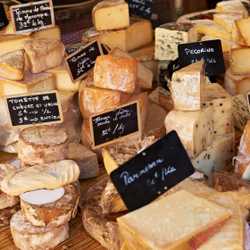
You might try classifying the different types of French cheese in several ways. You could use the region of origin, the type of milk, or perhaps the fat content. But, course, France has its own system.
Known as les huit familles de fromage, or eight families of cheese, this system of classification is based roughly on some key characteristics of the cheese. They need all eight families, because there are a lot of different cheeses in France. It is said that there are so many different types of French cheese that even if you ate a new one each day, it would take you more than a year to try all of them!
With all of these varieties, there is a lot you could learn about French cheese, but the most important thing is to pull up a chair and start tasting. Here is an introduction to the eight families to get you started.
1. Fresh Cheeses
These cheeses are white and contain a lot of water. They are made from cow's milk, goat's milk, or sheep's milk and are not aged. Rather than adding rennet, which is used to create some cheeses, the curd is formed by adding lactic starter to the milk.
These are not the types of French cheese you would see offered on a cheese platter at a meal. Rather they are eaten separately, sometimes in the same manner as a yogurt, and sometimes used in recipes.
Some popular varieties of French fresh cheeses are: Petit Suisse and Brousse.
2. Soft Cheeses with Natural Rind
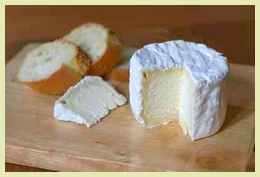
These are soft cow's milk cheeses, which you will recognize by their white, almost floury surface. They are aged about a month. These include a lot of well known types of French cheese that you may have tried, and which are often served in France after the main course.
Some popular varieties are: Brie, Camembert, Neufchatel Cheese and Chaource.
3. Soft Cheeses with Washed Rind
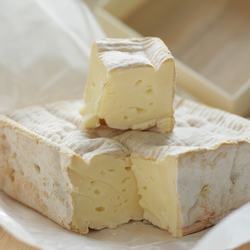
Once again these are cheeses made from cow's milk, but this time the rind is washed during the aging process, which prevents the formation of surface molds. This washing produces a supple and colorful rind. These types of cheese also find their way on to French cheese platters.
A few of the better known varieties are: Munster Cheese, Pont-l'Évêque, Reblochon Cheese, and Epoisses Cheese.
4. Pressed Cheeses
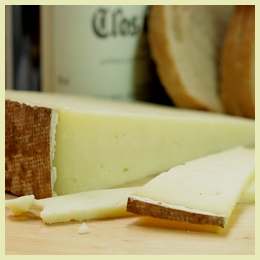
These types of French cheese are submitted to pressure during the processing, which drains the cheese of some of its moisture. After applying pressure, the cheeses are than placed in carefully controlled conditions and aged for several months.
During the aging, they are washed, brushed and turned so that the rind forms in a uniform fashion. You will find a large variety of pressed cheeses in the French supermarket.
Two very popular varieties are: Cantal and Ossau-Iraty.
5. Pressed and Cooked Cheeses

Popular varieties are: Emmental and Gruyère.
6. Goat Cheese
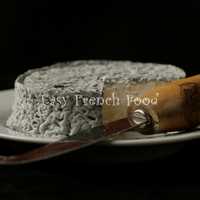 Although you could fit the various goat cheeses into the other categories, there are so many of them that the French have given them their own family. There are officially over a hundred varieties of goat cheese in France.
Although you could fit the various goat cheeses into the other categories, there are so many of them that the French have given them their own family. There are officially over a hundred varieties of goat cheese in France.
Sometimes the goat's milk is mixed with cow's milk to create a mi-chèvre. Pur chèvre contains only goat's milk. Goat's milk cheese is fun - it comes in a wide variety of shapes and sizes and sometimes special little boxes.
Three popular ones are: Crottin de Chavignol, Pouligny-Saint-Pierre and Selles-sur-Cher.
7. Blue Cheeses
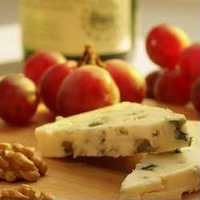
These types of French cheese are easily recognized by the channels of blue or greenish-blue that run throughout them. They are mostly made from cow's milk with the notable exception of Roquefort, which is made from sheep's milk.
Blue cheeses are ripened a long time and have a strong flavor and smell. They make a great cheese to offer as part of a cheese platter after the main course. Some of the well known varieties are: Bleu de Bresse, Roquefort, and Fourme d'Ambert.
Learn more here: French blue cheese.
8. Processed cheeses
These types of French cheese are made from other cheeses blended together. They are usually sold in small portions and can be flavored with various things, such as garlic, pepper, and herbs. They are meant to be spread, and you might even catch a Frenchman eating this cheese as an appetizer! Boursin is one well known example.
Return to French Cheese.
Fondue
One great way to use some of these types of French cheese is in a fondue recipe. Best Fondue.com is the place to have fun and enjoy the best fondue tonight. Find everything you need right here: information on fondue sets and equipment, cheese fondue recipes,chocolate fondue recipes, caramel fondue and other dessert recipes, meat fondue, chicken fondue, vegetarian recipes, fondue dip recipes and much more.
New! Comments
Have your say about what you just read! Leave me a comment in the box below.